
|
|
| >>> b i o g r a p h y |
|
|
|
| |
| |
|
| | |
| |
 Just like the Cape Verdean diva Cesaria Evora, Gabriela Mendes was born and grew in the town of Mindelo, on the island of São Vicente, one of the nothern islands in Cape Verde. Just like the Cape Verdean diva Cesaria Evora, Gabriela Mendes was born and grew in the town of Mindelo, on the island of São Vicente, one of the nothern islands in Cape Verde.
She was four years old when she discovered the pleasure of music, by listening to her mother singing with famous musicians such as the violonist Malaquias.
The little girl Gabriela went to the Salesiana School, famous to have accomodated futures great names of contemporary Cape Verdean music (Tito Paris, Paulino Vieira, Bau, etc). Father Cristiano insisted in order she integrated the choral society of the school; she quickly became the soloist of it.
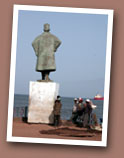 Parallel to this first musical engagement, Gabriela learnt how to sing the melodies and Cape Verdean rhythms in district festivals; she moves from mornas to coladeiras or galôpe. Parallel to this first musical engagement, Gabriela learnt how to sing the melodies and Cape Verdean rhythms in district festivals; she moves from mornas to coladeiras or galôpe.
Encouraged by her virtuosos friends Bau, Voginha or Bius, she understood quickly that her passion for music was taking more and more importance in her life.
At the end of the 90s, Gabriela runs concerts in pubs and hotels of Mindelo, one following the others. Her repertory was increasing and it drew public’s attention.
In 2000, she went up for the first time on the stage of a festival, that was in Santo Antão, and a few months later, she was invited at the festival of Santa Maria (island of Sal) where she sang for 40000 people, accompanied by Cesaria Evora's musicians.
|
|
 |
My concert was a success, the critics received me like a revelation of the Cape Verdean music, I even had a very first proposal for a contract. |
 |
|
| |
At the end of 2000, a label makes her play in Paris, in first part of her fellow countrywoman Mariana Ramos. And she concluded the year 2000 with her first concert in Praia, the capital of Cape Verde, on the island of Santiago.
The following year, after having made a song recital with Bau, Bius, Djosinha, Luis Morais or Tito Paris in São Vicente, her island, Gabriela seduces the public of the famous festival of Baia das Gatas, then at Escurralete, in the next island of Santo Antão.
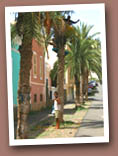 In 2002, she played several times in Portugal; in Porto at the festival “Oporto 2002”, then musical evenings at the Pub Enclave in Lisbon. She is invited in other festivals, as in Fest-Vale in the island of Santiago or in Praia da Cruz in Boa Vista. In 2002, she played several times in Portugal; in Porto at the festival “Oporto 2002”, then musical evenings at the Pub Enclave in Lisbon. She is invited in other festivals, as in Fest-Vale in the island of Santiago or in Praia da Cruz in Boa Vista.
In 2003, she is selected in Mindelo among others very famous Cape Verdean artists for a tribute to Bana, before trying to conquer the heart of the audience of the 9th Festival of the Traversée de Tahitou, in France.
She will give some others concerts in France in 2004.
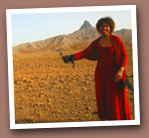
These trips to France continue in 2005 since that's in Paris, at Studios Plus XXX that Gabriela records her first album Tradição, produced by Casa da Morna Lda and distributed by Empreinte Digitale/Nocturne. When released, the CD album has been diffused regularly on Radio International France, France Inter, France Culture and was the subject of criticisms very encouraging in the French press.
After a new passage to the festival of Baia das Gatas, Gabriela chooses the Parisian stage of China Club for launching Tradição, concert followed by other events in Mam' Bia, Renoma Café (Paris), or at the Casino des Pins in Sables d’Olonne.
 In 2006, she's the first singer female to sing at Baia das Gatas's festival, followed by other great names like Dudu Araujo or Tcheka. Some weeks later, she's included in two compilations: the first one is a Putumayo's playlist, the other one is Zone Franche, a french network interested by world music. In 2006, she's the first singer female to sing at Baia das Gatas's festival, followed by other great names like Dudu Araujo or Tcheka. Some weeks later, she's included in two compilations: the first one is a Putumayo's playlist, the other one is Zone Franche, a french network interested by world music.
In 2007, Gabriela became a real globe-trotter: she's been seen in France (Nice Jazz Festival, Festival of Barcelonette), in Tunisia (Musiqât), in USA (SOB's in NYC), in Canada (Nuits d'Afrique du Québec), before to sing in some french cultural centers. These gigs support the release of the new edition of her CD, which includes now her clip and the french translation of the song "Tradição", with lyrics written by Teofilo Chantre.

Here is the address to which you can write to Gabriela:
Casa da Morna
CP. 701
Mindelo / São Vicente
Cape Verde
Or by email at: casadamorna hotmail.com hotmail.com
See you soon!
|

|
| |
>>> w h a t d o e s s h e s i n g ?
| |
Cape Verde, this small dry and arid country has forced its people to emigrate, leaving his heart and his soul. The repertory is based on traditional rhythms expressing the feelings and reflecting the capeverdean's way of life.

The MORNA expresses loneliness, sadness, nostalgia, disappointment and love, while the COLADEIRA is a perfect mixture of joy and dance, under the spell of pinching guitar’s string, a violin sound and a melodious voice.
With the SAN JON, we can guess the power of a rhythm which speaks about these islands beaten by the wind and by a strong ocean; it talks also about this nice people who wishes to see his children smiling, who wants the hope back and who wants for each man to enjoy his own existence.
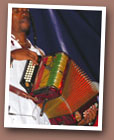 With the FUNANA, played in the southern islands, we can's avoid to be carried away by the courage and the will of this happy people who, on drums and with accordion, beats the rhythm of a dance full with sensuality. With the FUNANA, played in the southern islands, we can's avoid to be carried away by the courage and the will of this happy people who, on drums and with accordion, beats the rhythm of a dance full with sensuality.
"Tradição", the Gabriela's first album, gathers pieces written by some of the best capeverdean composers, each one of them being known for his quite particular own style.
Manuel d'Novas takes part, accompanies and models the capeverdean music since long decades, today he's still one of the Cesaria Evora's best composers, as he was for Bana, the two larger ambassadors of the morna and coladeira throughout the world.
Musicologist and impassioned poet, Vasco Martins writes symphonies by integrating new types of chords in the traditional music. One owes him also the composition of the great CD album "Coraçon Leve" for the singer Herminia.
Real talented young person in his thirties, charismatic, successful in France and in Cape Verde, Tcheka has found some time, between recordings and interviews, to write two superb songs for Gabriela.
"Ness bo jardim" has been composed by Dany Mariano, writing a new standard just like he did with some others hits (the wonderful "Mundo ka krê", for example).
|
|
>>> M o r e a b o u t C a p e V e r d e
| |
> geography
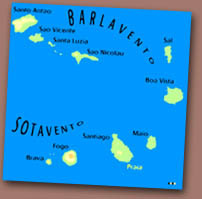
Located at 500 km of Senegal, the Cape Verde is an archipelago of ten islands (including nine inhabited) divided into two groups: Barlavento at North, Sotavento at South.
Made of volcanic origin, the archipelago counts only one island, Fogo, with an active volcano, which is also the highest point, with 2800 meters. The last eruption happened in 1995.
With a surface of 991 km2, Santiago is the largest island while Brava, smallest, extends only on 64 km2.
The three islands in the far East are eroded and present only moderate relief. We can see there many sand dunes.
> history
Drawing their name from alignment that they show with the peninsula of Cape Verde in Senegal, the Cape Verde Islands were discovered in 1460 by the Genoese navigators Antonio and Bartolomeo da Noli on duty for Portugal. They were completely uninhabited.
Then begin the settlement of the archipelago with Portuguese colonists, Jews fleeing the Inquisition, criminals deportees, slaves captured on the African coast, etc. Sal and São Vicente will be the last islands to become populated.
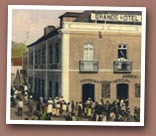 Last point of supply for water and food before the crossing to Caribbean and America, the Cape Verde will experience a development related to the slave trade. Last point of supply for water and food before the crossing to Caribbean and America, the Cape Verde will experience a development related to the slave trade.
To the 19th century, the coal depots installed in São Vicente will contribute to the expansion of the archipelago, but the Portuguese administration will be unable to envisage a solution of replacement when the boats give up coal for the benefit of fuel.
Like all the Portuguese colonies, the Cape Verde will know the dictatorship of Salazar who repressed severely any independence inclination. Armed struggles on the African continent (of which that carried out in Guinea-Bissau by Amilcar Cabral to the head of the PAIGC - "African Party for the Independence of Guinea and Cape Verde") will contribute to weakening then overthrow the power in Portugal at the time of the Carnation Revolution in 25th of April 1974.
The Cape Verde will obtain its independence on July 5, 1975 and will pass under the exclusive control of the single party with Marxist orientation, the PAIGC, become PAICV thereafter.
Upon the break-up of the Soviet block, the opening to the democracy will be followed in 1991 with the passage to the multiparty system and the victory of liberal party MPD (Movement For the Democracy). Since, elections and changeover follow one another.
> pratique
If the official language is Portuguese, the spoken language is the Creole.
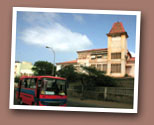 The settlement of the islands gave place to a great interbreeding, especially in the North islands with the passage of many trading vessels in São Vicente. The population is evaluated with 440000 inhabitants in the islands and emigrants have been estimated at nearly one million divided between the USA, Portugal, Holland, France, Italy, Luxembourg, etc. The settlement of the islands gave place to a great interbreeding, especially in the North islands with the passage of many trading vessels in São Vicente. The population is evaluated with 440000 inhabitants in the islands and emigrants have been estimated at nearly one million divided between the USA, Portugal, Holland, France, Italy, Luxembourg, etc.
The official currency is the Cape Verdean Escudo, indicated ECV or CVE (with 1 euro = 110,265 escudos). Euro banknotes are accepted in most of the shops, at a different rate (1 euro = 100 escudos).
The country occupies the 103rd place in the classification of the human development held by the United Nations. It will pass soon from the category of the "Least Advanced Countries" to that of the "Emergent Countries". The annual income per capita is of 1440 dollars. The money sent to the country by the emigrants, accounts for a third of the GNP, another third being brought by the international subsidies.
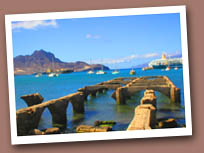 The country experiences two seasons: the dry one, from November to July, and the rainy season, August to October, during which there can be some downpours. The temperatures are high and almost constants, with a minimum of 20°C in winter. The evenings can be chilly (16-18°C) from December to March. Lastly, the archipelago is crossed by winds as from November until June, with strong possible gusts at the end of the season. The country experiences two seasons: the dry one, from November to July, and the rainy season, August to October, during which there can be some downpours. The temperatures are high and almost constants, with a minimum of 20°C in winter. The evenings can be chilly (16-18°C) from December to March. Lastly, the archipelago is crossed by winds as from November until June, with strong possible gusts at the end of the season.
The capeverdean music began to be famous in the 90s with artists as Boy Gé Mendes, Fantcha, Tito Paris, Téofilo Chantre and of course Césaria Evora. The summer festival of Baia das Gatas organized in São Vicente island welcomes till 30000 people per day.
The national dish is called catchupa, a very substantial stew made with white beans, corn, cabbages, pumpkin, fish and salt pork.
|
|
|
    
     
|














